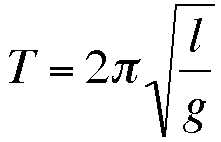


Hippocampus.org - see the numerous physics videos for every conceivable physics topic
Annenburg/CPB Video on Demand - see especially the 52-part series Mechanical Universe.
Here are some additional good to fair sites dealing with projectile motion furnished by Jason Ryan's Physics Class on November 7, 2002:
http://library.thinkquest.org/16600/games/bball/
This is a simple simulation where you try to get a basketball into the hoop by changing a few of the parameters.
http://www.explorescience.com/classic/monkey.htm
This is an adaptation to the shoot the monkey demo. Here you shoot a skeleton with a basketball.
http://zebu.uoregon.edu/nsf/cannon.html
This site has a little more with what you can do to the experiment. You can change gravity, the velocity, drag, …
http://www.phy.ntnu.edu.tw/java/projectile/projectile.html
This site has two cannons pointing at each other. The cannons shoot at the same time and you see the balls hit in the air. There wasn’t much that you could do with this one.
http://www.phys.virginia.edu/classes/109n/more_stuff/applets/projectilemotion/jarapplet.html
You can adjust the drag and other parameters on this site as well. I liked playing around here for a few minutes.
http://www.msu.edu/user/brechtjo/physics/cannon/cannon.html
This site is very simplistic. I didn’t stay here for too long.
http://plabpc.csustan.edu/java/projectiles/projectile.html
This site doesn’t let you see the projectile as it flies through the air. You just get to see where everything lands and the different distances.
http://home.a-city.de/walter.fendt/phe/projectile.htm
This is so far the best site that I have seen. There are many different components of the projectile that you can look at, force, energy, vectors…
http://library.thinkquest.org/15433/games/game3.htm
This site has a different type of game. You have to get a dog in a car to launch off a cliff into a cave.
http://members.bellatlantic.net/~vze23kcv/old/projectile.html
This is a list of projectile sites!!! Very helpful.